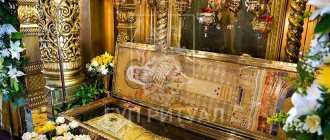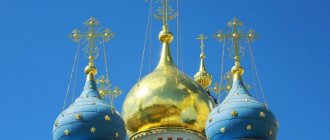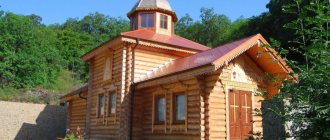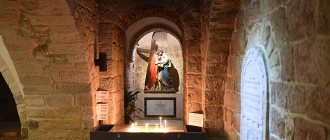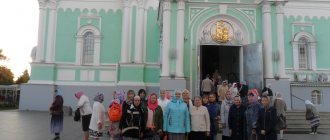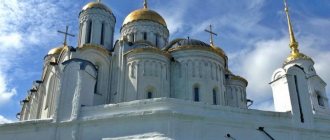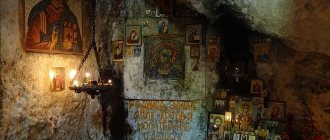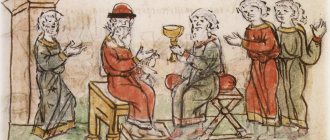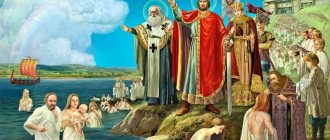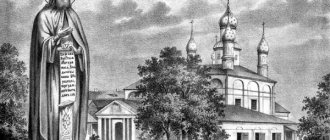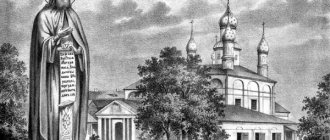A person who is far from religion cannot always answer the question of whether the temple in front of him is a church, or maybe a monastery or a chapel. Often such a gap in knowledge can alienate a person from Orthodoxy, even if there is a desire to visit a holy place. Out of embarrassment of his ignorance, a person may be afraid to enter a holy temple, church.
Therefore, it is so important to understand the significant differences between a temple, church, monastery or chapel, which have their own rules, foundations, traditions, and norms of behavior.
For a non-religious person, a shallow believer, there are no significant differences. Answering a question, he can say that a temple or cathedral is something big, and a church is a little smaller, a monastery is where they take monastic vows.
But this is far from entirely true. In order to understand the issue of differences, it is necessary to go in ascending order.
Chapel
The smallest church building intended for prayer. There is no altar in the chapel, but despite its purpose, the chapel can be quite large. It can sometimes be confused with a church due to its size.
The main difference is the absence of an altar and abbot.
The chapel is a kind of temporary refuge for an Orthodox Christian who needs prayer. This is a place where, far from the bustle and prying eyes, a person can talk alone with the Almighty. The chapel often even has a bell tower. They are located not only in cities and towns, but more often they can be found in cemeteries, holy places, and along roads. This is how an Orthodox Christian can always find a place to talk with God.
Many associate the name “Chapel” with the short duration of a believer’s stay in it; a person comes there “for an hour,” to pray, restore spiritual strength and move on.
Holy springs in the Moscow region
Many wonderful springs that help heal are located in the cities of the Moscow region. Their list is quite impressive, but the most visited and famous are the following places:
- Muranovo. There are several sources here. Among them, a well stands out in honor of the Kazan Icon of the Mother of God. You need to drive here along the Yaroslavskoye Highway, at the 44th km turn at the sign.
- Zvenigorod. It takes 10 minutes to get to the source. spend on a walk from the Savvino-Storozhevskaya monastery. There is a bathhouse for pilgrims and a small chapel.
- Gremyachiy key in Sergiev Posad (Vzglyadnevo). Equipped with a font. Located on the Vondiga River, near the village of Vzglyadnevo.
When visiting holy springs and monasteries, venerating miraculous icons and holy relics, first of all, you need to have strong faith and trust in the mercy and help of God. Otherwise, the pilgrimage will become a tourist journey that does not touch the soul. If a person plunges into the icy waters of holy springs without faith and prayer, he may simply get sick from the cold.
If you find an error, please select a piece of text and press Ctrl+Enter.
Recommended by topic
Ioannovsky Monastery Sretensky Monastery Danilov Monastery Valaam Monastery
In the temple, unlike the chapel, there is an altar, where all the main Sacraments and services are performed, including liturgies. The church has a rector and a parish. It can be not only a separate building, but also a small room attached to the main building, which can perform a completely different function.
For example, a temple at a hospital, medical center, and so on. Previously, when the first Christian churches arose, they could even be residential buildings; they were called house churches.
In Orthodoxy there are:
- Cathedral (the main church of the diocese);
- Palace;
- Parish;
- Monastic;
- Temple-monastery;
- Prison;
- Sick leave and so on.
There are only a few options for the architectural structure of temples. Temples can be rectangular, personifying the Ark, as a symbol of the salvation of humanity and all living things. In the form of an octagonal star, as a symbol of light, forgiveness, which Orthodoxy brings to people. There are cross-domed churches, where the central square part is divided by 4 columns into 9 equal parts, as a symbol of the integrity of the Orthodox Church. More often you can find churches in the form of a circle.
Each temple can bear the name of the Lord or the Mother of God; temples are also named after icons in their honor (Church of the Kazan Icon of the Mother of God), names of saints (in honor of St. Basil), angels (Cathedral of the Archangel Michael, etc.).
Temples also receive names in honor of Orthodox holidays (Trinity Cathedral, Ascension Cathedral).
Where are the 7 oldest churches in the Moscow region?
The Moscow region attracts tourist pilgrims from all over Russia and from abroad. In the region there are world-famous Orthodox shrines, such as the Trinity-Sergius Lavra. In total, there are at least 1.7 thousand churches in the Moscow region, some of them are not so famous, although they have special historical and religious value. Where the oldest churches in the Moscow region are located and why they are noteworthy, read the material from the mosreg.ru portal.
Lopasnya-Zachatievskoe estate: how Pushkin’s legacy is preserved in the Moscow region>>
Cathedral of the Assumption of the Blessed Virgin Mary, 1396 – 1407. (Zvenigorod)
Candles in the temple
Source: Photobank of the Moscow region, Alexander Kozhokhin
On the outskirts of Zvenigorod, on the territory where the Kremlin was once located (on Gorodok), stands the Assumption Cathedral. The church was founded by the son of Dmitry Donskoy, Prince of Zvenigorod Yuri Dmitrievich. Today, the high earthen ramparts around the hill where Zvenigorod began to be built in the 12th century have been preserved. The temple has an interesting feature: visitors notice that its walls taper upward. That’s right – this technique makes the building visually taller up close. Initially, the church was central in the city, but now it is located on a quiet, remote street among private houses.
Where is: Zvenigorod, Gorodok street, 1.
Muranovo Estate Museum: excursion to the 19th century>>
Cathedral of the Nativity of the Virgin, 1405-1407. (Zvenigorod)
The main bell on the bell tower of the Church of the Resurrection of the Word in Pavlovsky Posad.
Source: Photobank of the Moscow region, Yuri Berezin
The Church of the Nativity of the Virgin Mary is located in the Savvino-Storozhevsky Monastery in Zvenigorod. Today the Nativity Cathedral is the central element of the monastery.
Like the Assumption Cathedral, it was built at the expense of Yuri Zvenigorodsky, but, apparently, by other masters - not as skillfully as the latter. The cathedral was rebuilt many times. Around 1549, the Savvinsky chapel and a double-sided porch were added. In 1687-1688, a passage gallery to the royal palace was added. In the 1780s, the arches of the lower tier of the southern part of the cathedral with the sacristy were laid. The roof was re-laid at least three times.
Location: Zvenigorod, Ratekhinskoe highway, possession 1.
Ilyinskoye-Usovo estate: inclusion in the “Imperial Route” as an impetus for development>>
Church of the Conception of John the Baptist on Gorodishche, 1360-70. (Kolomna)
Church domes
Source: Press service of the Governor of the Moscow Region, Denis Trudnikov
An architectural monument of the second half of the 14th century - St. John the Baptist Church - is located in Kolomna. In the 16th century, the upper part of the temple was rebuilt, then the building underwent several more reconstructions. The church has survived to this day in its 16th-century appearance. However, a bas-relief depicting a mythical animal - a leopard, a wolf, a dog or a basilisk - has been preserved. It became the unofficial symbol of Kolomna.
Where is it: Kolomna, st. Gorodishchenskaya, 102A.
“Golden collection” of excursions for residents of the Moscow region: where to go by train on the weekend>>
St. Nicholas Church in the village of Kamenskoye, 1309-1312. (Naro-Fominsk district)
About 700 parishioners came to the Christmas service at the Assumption Cathedral of the Novodevichy Convent
Source: Press service of the Governor of the Moscow region, Anton Chernov
St. Nicholas Church near Naro-Fominsk is made in simple and strict forms. The small building is distinguished by a rare approach for that time by an architect who, most likely, either studied abroad or was an invited foreigner. The building is made in the technique of South Slavic stone churches of the 12th-14th centuries.
In the 15th century, the church was destroyed by Polish invaders and was not restored until the end of the 17th century. After reconstruction, the temple was consecrated in 1649 and transferred to the jurisdiction of the Archangel Cathedral in Moscow. Another difficult period in the history of the temple was the post-war years. It was used for the needs of a dairy farm. In 1958-1964, the building was restored and freed from unnecessary buildings.
Location: Naro-Fominsk urban district, Kamenskoye village, Tsentralnaya street.
Slackline sites, bookshelves and Wi-Fi – what’s new in the parks of the Moscow region>>
Church of Joachim and Anna, 1390s. (Mozhaisk)
Divine service in the Trinity Cathedral in Podolsk.
Source: Photobank of the Moscow region, Galina Dobrynina
The complex of churches on the outskirts of Mozhaisk was formed in the period from the 14th to the 19th centuries. Until 1764, the 16th-century Yakiman (Joachim and Anna) monastery with a cathedral stood on the hilly bank of the Moscow River. A chapel was added to it, then the cathedral was dismantled. Then it was literally turned inside out: the northern wall shared with the chapel was made southern, its interior became a façade. The current Yakiman Church was built in the 19th century on the foundations of a white stone building from the late 14th century with a partially preserved chapel. From the street you can see a trace of the connection to the wall of the iconostasis and the niche of the altar. This unusual church remains little studied today.
Where is it: Mozhaisk, Krupskaya street, 6-A.
A journey to buy cheese: where to try the best varieties in the Moscow region and who to take cooking lessons from>>
Trinity Cathedral of the Trinity-Sergius Lavra, 1422-1423. (Sergiev Posad)
Easter service in Troitsk
Source: Photobank of the Moscow region, Alexander Kozhokhin
Trinity Cathedral is the oldest surviving building in the Trinity-Sergius Lavra. It was erected over the relics of St. Sergius of Radonezh, and it was from here that the modern ensemble of the monastery began to form. The history and decoration of the cathedral are also connected by the name of the icon painter Andrei Rublev, who, together with other masters, painted the interior and built the iconostasis that has survived to this day. The artist wrote his famous “Trinity” for him. Another feature of the iconostasis is that it is continuous, and the icons in it are not separated by altar pillars, as was usually done.
The cathedral is active. In it, the Divine Liturgy is celebrated daily, prayer services with an akathist to St. Sergius of Radonezh, and on Fridays - a cathedral prayer service with an akathist to the Mother of God in memory of the appearance of the Most Holy Theotokos to St. Sergius. The brothers of the monastery also take monastic vows here.
Location: Sergiev Posad, Holy Trinity Lavra of Sergius
Graffiti Museum in the Moscow Region - how Trekhgorka turned into a street art jungle>>
Epiphany Refectory Church, 1530 (Volokolamsk District)
About 700 parishioners came to the Christmas service at the Assumption Cathedral of the Novodevichy Convent
Source: Press service of the Governor of the Moscow region, Anton Chernov
The Epiphany Refectory Church is part of the refectory chamber of the Joseph-Volotsky Monastery. It is based on a building dating from 1504-1506. Then the refectory was smaller. In the 16th century it was rebuilt, preserving the basement and northern wall. The upper part of the church was rebuilt by the architect Trofim Ignatiev in 1682. In the 19th century, a porch was added to the refectory on the west. In Soviet times, there was a local history museum in the refectory. Today, the entire architectural ensemble of the monastery has been transferred to church administration.
Where is it located: Volokolamsk urban district, Teryaevo village, on the territory of the Joseph-Volotsky monastery.
Where to celebrate a celebration inexpensively in the Moscow region: 8 restaurants with good cuisine>>
Church
If we talk about the church, not as an institution of Orthodoxy, then in meaning this concept does not differ from the temple. The temple is considered a common name for many Orthodox buildings.
By calling a church an Orthodox church, a believer will not be mistaken. There are no significant differences between a church and a temple.
Churches are the site of the sacraments, which are performed by the rector, and the most common Orthodox buildings.
It has three parts:
- altar,
- central for parishioners to pray,
- narthex - “vestibule”.
These parts personify Heaven or Paradise (altar), earth (central part) and the sinful land, not yet renewed (narthex).
If the landscape allows, the church is always built with the altar facing east, recalling that the Almighty is the creator, the Sun of the whole world
Cathedral
In the classification, the cathedral is considered the largest building. The cathedral, in simple words, seems to consist of several churches. The large building has several altars, which allows several clergy to perform the sacraments of worship at once. As for the sacraments, the same sacraments take place in the temple (church) and cathedrals.
Services in cathedrals are held in parallel, as it were, to give as many believers the opportunity to attend as possible. It is believed that a cathedral refers to the clergy headed by a bishop, archbishop or patriarch. This is where the name comes from - the cathedral.
Holy springs of Moscow
By the grace of God, the springs have a special grace; some of them are equipped with baths. Believers plunge into holy waters and receive healing.
There are several sources in the capital:
- Cold (Sergievsky) holy spring. Tradition says that St. Sergius of Radonezh wanted to found a monastery on this site. The source is located in Teply Stan, near house 132/8 on the street. Trade union.
- Source in the Tatar ravine. The place attracts many pilgrims. Believers note a significant improvement in their general condition after visiting the spring. It is located in Moskvoretsky Park, near st. Autumn, 18. Landmark - the church in honor of the Nativity of the Blessed Virgin Mary.
- Kadochka. People suffering from infertility especially rush here. Located in the Golosovo ravine, it belongs to the Kolomenskoye Museum-Reserve. The landmark is the Church of the Ascension of the Lord.
Laurels and monasteries
Standing apart in the hierarchy of Orthodox buildings are the monastery and the monastery. For a simple person to understand: a monastery is always a monastery. But a monastery is not always a monastery. To understand, you need to start by understanding what a monastery is.
Monastery
A monastery is a home and refuge for monks who, due to their religious beliefs, renounce all earthly goods and devote their lives to serving the Lord. This is a special place. It becomes this way thanks to the prayers of hundreds of monks and nuns living in the monastery.
There they lead their daily lives; many monasteries have their own subsistence farming. Monks grow cultivated plants, plant gardens, do handicrafts, and so on. Any work in a monastery is called “obedience.” But the basis of life, nevertheless, is prayer, fasting, humility and obedience. The prayers here take longer; they are performed in the monastery 4-5 times. This is how monks (nuns) devote themselves to the Orthodox faith.
Each monastery has its own special way of life; all monks or nuns living in the monastery are called a community, a family. In addition to monks or nuns, pilgrims, the so-called guests of the monastery, can live in the monastery. Usually these are people in difficult life situations. A special category of residents are novices - people preparing to take monastic vows.
While both women and men can attend church, monasteries are strictly divided into women's and men's. Here we should tell you what Lavra is.
